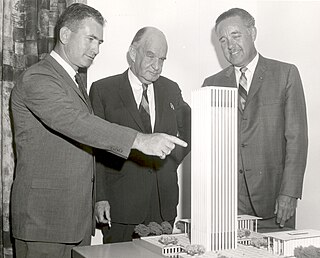
Edward Durell Stone was an American architect known for the formal, highly decorative buildings he designed in the 1950s and 1960s. His works include the Museum of Modern Art, in New York City; the Museo de Arte de Ponce in Ponce, Puerto Rico; the United States Embassy in New Delhi, India; The Keller Center at the University of Chicago; the John F. Kennedy Center for the Performing Arts in Washington, D.C.; and the EcoTarium, formerly known as the New England Science Center in Worcester, Massachusetts.

The Waldorf Astoria New York is a luxury hotel and condominium residence in the Midtown Manhattan neighborhood of New York City, United States. The structure, at 301 Park Avenue between 49th and 50th Streets, is a 47-story, 625 ft (191 m) Art Deco landmark designed by architects Schultze and Weaver and completed in 1931. The building was the world's tallest hotel until 1957, when it was surpassed by Moscow's Hotel Ukraina. An icon of glamor and luxury, the Waldorf Astoria is one of the world's most prestigious and best-known hotels. Once owned by Conrad Hilton, Waldorf Astoria Hotels & Resorts, a division of Hilton Hotels, operates under the name of the original hotel in locations around the world. Both the exterior and the interior of the Waldorf Astoria are designated by the New York City Landmarks Preservation Commission as official landmarks.
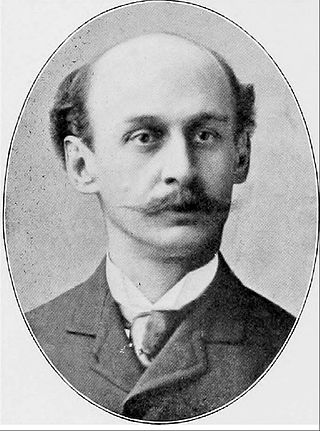
Henry Janeway Hardenbergh was an American architect, best known for his hotels and apartment buildings, and as a "master of a new building form — the skyscraper." He worked three times with Edward Clark, the wealthy owner of the Singer Sewing Machine Company and real estate developer: The Singer company's first tower in New York City, the Dakota Apartments, and its precursor, the Van Corlear. He is best known for building apartment dwellings and luxury hotels.
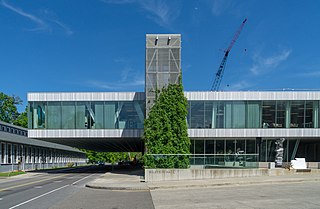
The College of Architecture, Art, and Planning (AAP) is the school of architecture at Cornell University in Ithaca, New York. It offers 20 undergraduate and graduate degrees in five departments: architecture, art, urban planning, real estate, and design technology. Aside from its main campus in Ithaca, AAP offers programs in Rome, Italy and in New York City, New York.
Weiss/Manfredi is a multidisciplinary New York City-based design practice that combines landscape, architecture, infrastructure, and art. The firm's notable projects include the Seattle Art Museum's Olympic Sculpture Park, the Brooklyn Botanic Garden Visitor Center, the Tata Innovation Center at Cornell Tech, the Singh Center for Nanotechnology at the University of Pennsylvania, the Museum of the Earth, the Embassy of the United States, New Delhi, and Hunter's Point South Waterfront Park.

Der Scutt was an American architect and designer of a number of major and notable buildings throughout New York City and the United States.
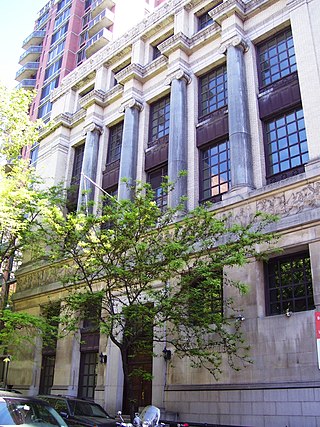
The New York School of Applied Design for Women, established in 1892 by Ellen Dunlap Hopkins, was an early design school for women in New York City. The 1908 New York School of Applied Design building was designed by Harvey Wiley Corbett and is now landmarked.
Shepley Bulfinch is an international architecture, planning, and interior design firm with offices in Boston, Hartford, Houston, and Phoenix. It is one of the oldest architecture firms in continuous practice in the United States, and was recognized by the American Institute of Architects with its highest honor, the AIA Architecture Firm Award, in 1973.

Cooper Robertson is an international architecture and urban design firm, headquartered in New York City. It was founded in 1979 by Alex Cooper and Jaquelin T. Robertson.

Herman Lee Meader was an American architect and author.

Frederic David Schwartz was an American architect, author, and city planner whose work includes Empty Sky, the New Jersey 9-11 Memorial, which was dedicated in Liberty State Park on September 11, 2011, the tenth anniversary of the September 11 attacks.
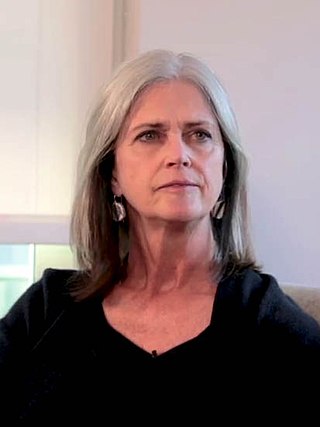
TenBerke is a New York City, based architecture and interior design firm founded and led by Deborah Berke, who concurrently serves as Dean of the Yale School of Architecture.
Ulrich Joseph Franzen was a German-born American architect known for his "fortresslike" buildings and Brutalist style.

Kevin Daly Architects (KDA) is Kevin Daly's architecture firm in Los Angeles, California. It was founded in 1990 as Daly Genik. Daly has taught architecture and is a fellow at the American Institute of Architects (FAIA).
Ilse Catherine Crawford is a British interior and furniture designer.

Morphosis Architects is an interdisciplinary architectural and design practice based in Los Angeles and New York City.
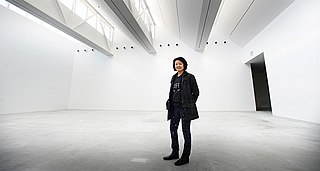
Toshiko Mori is a Japanese architect and the founder and principal of New York–based Toshiko Mori Architect, PLLC and Vision Arc. She is also the Robert P. Hubbard Professor in the Practice of Architecture at the Harvard University Graduate School of Design. In 1995, she became the first female faculty member to receive tenure at the GSD.

Gary Paul Haney FRIBA, FAIA is an American architect, a design partner in the firm of Skidmore, Owings & Merrill. Haney's approach draws heavily on environmental modeling techniques, deep materials research, and advanced building information modeling (BIM) technologies. Buildings on which he was lead designer include the supertall Al Hamra Tower in Kuwait City and civic buildings in the United States including two Public Safety Answering Centers in New York City and the United States Census Bureau headquarters and the redesign of the National Museum of American History, both in Washington, D.C.
Oppenheim Architecture is an architecture, planning, and interior practice based in Miami, New York, and Basel founded in 1999 by Chad Oppenheim. The firm has received multiple distinctions, including over 45 AIA Awards. Projects range between hospitality, commercial mixed-use, retail, and residential buildings in over 25 countries. The firm is notable for designing L.A. Villa, film director Michael Bay's residence. In 2018, the practice received the National Design Award for Interior Design by Cooper Hewitt, Smithsonian Design Museum.
David Montalba, FAIA, SIA, LEED AP is a Swiss-American architect based in Santa Monica, California. He is the founding principal of Montalba Architects, established in 2004.














